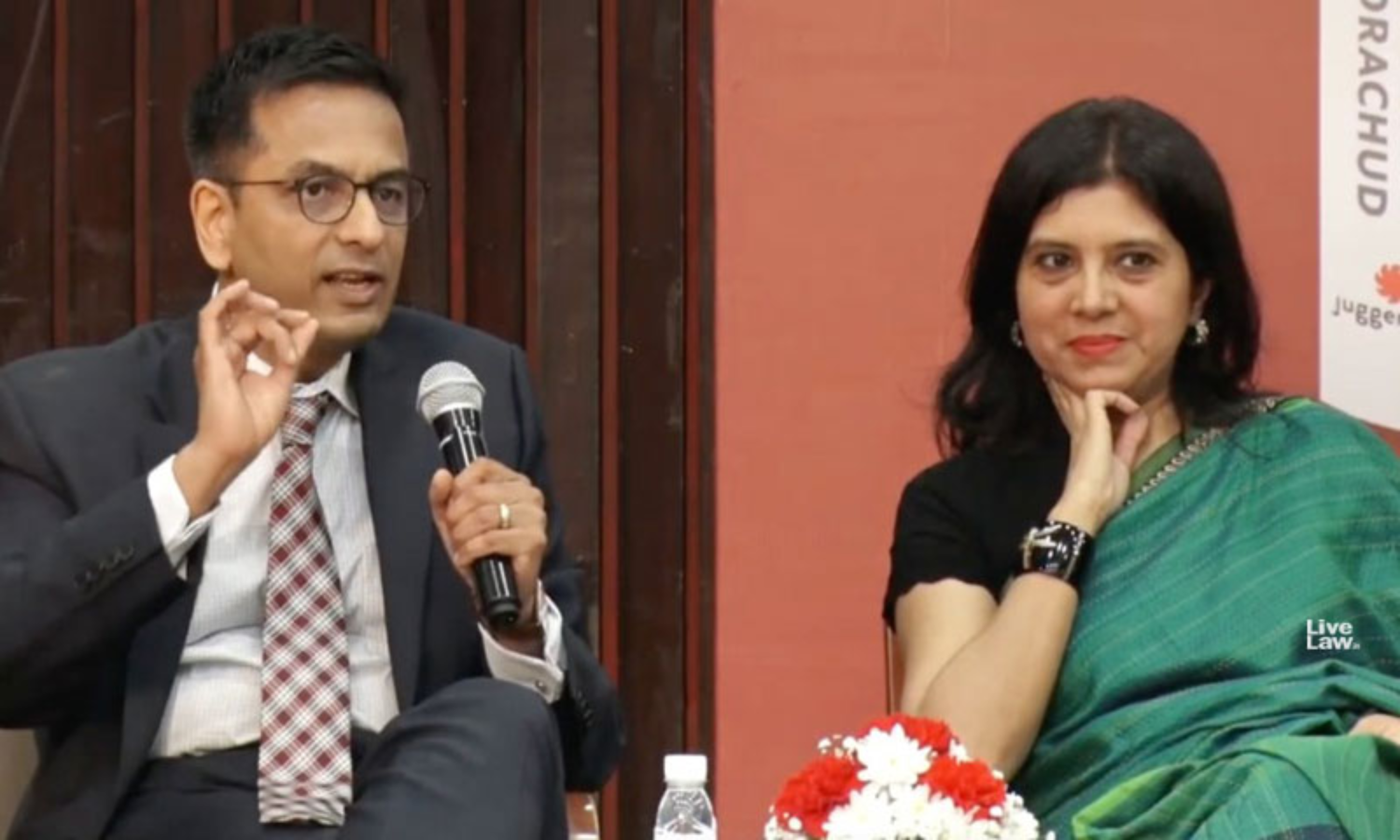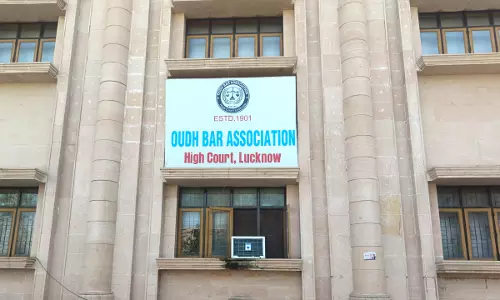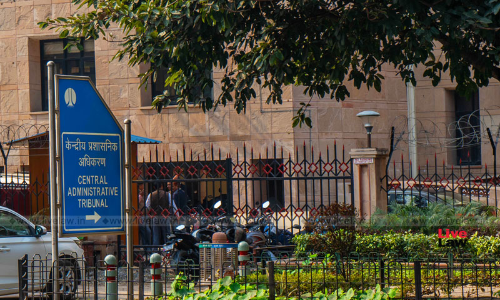Supreme Court judge Justice D Y Chandrachud has stressed on the need to accept India's pluralism in views and identities in its way forward. "I think the true value of the nation as we go forward today, is for us to accept that this is a nation of plural views; it's a nation of plural identities; it's a nation of a multitude of cultures." the judge said.Justice Chandrachud was speaking at...
Supreme Court judge Justice D Y Chandrachud has stressed on the need to accept India's pluralism in views and identities in its way forward.
"I think the true value of the nation as we go forward today, is for us to accept that this is a nation of plural views; it's a nation of plural identities; it's a nation of a multitude of cultures." the judge said.
Justice Chandrachud was speaking at the launch event of the book "The Cases That India Forgot", written by Dr. Chintan Chandrachud at New Delhi on Saturday.
"It is in this conflict of intellectual opinions of multitudes of cultures, identities and thoughts that the true India which I perceive for the next ten years should emerge", added Justice Chandrachud.
Former SC judge Justice A.K. Sikri, Additional Solicitor General Madhavi Goradia Divan, Managing Partner of AZB & Partners Zia Mody, and ThePrint Editor-in-Chief Shekhar Gupta, were also present at the dais.
The event commenced with Gupta as the moderator, commenting on how it was more lucrative for people to become lawyers and judges, and that scholarship for law and justice had declined; this decline had begun to rear its ugly head in the quality of writing of judgments. He specifically referred to the years between 2009 and 2015, wherein some of the judgments written were 'embarrassing'. Therefore, the importance of the link between scholarship and judicial practice was highlighted by Gupta by bringing to fore the book written by Dr. Chandrachud.
Referring to his life as a journalist, Gupta also recited an anecdote wherein he had to interview the then Chief Justice of India, Y.V. Chandrachud, to whom he asked why he had turned out a young woman lawyer wearing jeans from his courtroom. To this, Chief Justice Chandrachud responded that he was not irked by the jeans, but by the comb which was sticking out of her pocket which he deemed to be inappropriate.
The talk then began, led by Dr. Chandrachud, who stated that the impetus behind the writing of the book was that a large amount of legal writing in the country was emanating from non-traditional sources such as newspaper articles, rather than specialist law journals. The intention of such writing is to connect with a wider audience and include them in the conversation. The initial feedback received by Dr. Chandrachud revolved around the inaccessibility of such legal writing. Therefore, his goal, with the aid of his book, was to make legal writing accessible to those without a background or training in law.
"The primary impetus behind the book was to write a book that does explicate some sophisticated legal argument, but in a manner that is accessible to a wider audience. The broader impetus really is to increase citizen engagement with the law and the Constitution. I think it is particularly significant in the times in which we live where the Constitution in general and the Preamble specifically have assumed symbolic centrality across the country."
Dr. Chandrachud also emphasized the issue regarding how there existed many cases where courts had failed to adjudicate rights or had abdicated their responsibility, and it became the duty of the citizens or the government to recognize public opinion and thereby, change the law. The role of citizens was also important in interpretation of the laws, and particularly the Constitution during all stages of the process of laws being enacted.
Justice Chandrachud then took over the talk by stating how courts had become social institutions which led to increasing critiques about the judgements rendered, as they were not merely confined to resolution of cases, but were engaging in social dialogues. While the judicial role entailed insulation from engagement with society as they could not tell judges what to do, however it could not be translated into insulation from the impact of judgements on society itself.
Justice (retd.) Sikri, on being asked about the accessibility of justice, stated that things had changed over the last 20 years. Earlier, the position of the courts was daunting to the common man, however, due to various reforms, this position was increasingly changing. Then, on Dr. Chandrachud's book, Justice Sikri noted that it supplemented and complemented Zia Mody's "10 Judgements That Changed India". Additionally, by dividing the book into the broader topics of politics, religion, gender, and national security, the book highlighted significance of the topics even today.
ASG Madhavi Divan then noted that Dr. Chandrachud had the advantage of possessing a unique vantage point due to his standing as a third-generation legal scholar and lawyer. As a result of this unique perspective, he was able to provide to his audience anecdotes and backstage stories and therefore, "de-mystify the court for lay people and, sometimes even for lawyers".
On being asked by Gupta about the impact of decisions taken by courts who were distanced from the action on the ground, Divan responded that the responsibility on judges was indeed great as, while sitting in Delhi, they had to take decisions for those in the North-East. Therefore, there was need for increased sensitization of judges. For this reason, the National Judicial Appointments Commission (NJAC) had been proposed in order to strike down the monopoly of the collegium in appointing judges.
Zia Mody then complimented the element of storytelling and the research entrenched in Dr. Chandrachud's book. She proceeded to highlight how access to justice was difficult, along with the corresponding problem of lack of judges. However, on a note of optimism, she stated, "I don't think there is an eternal solution, but there is an eternal hope." Therefore, Dr. Chandrachud's book not only reminds every one of the forgotten failures, but also of the forgotten successes of the court.
Gupta then asked the panelists about whether the actions of judges required greater scrutiny. To this, Justice Chandrachud stated that there were methods in place to review the work of district court judges as well as a couple of areas which required change and improvement.
Justice Chandrachud focused on the issue of lack of diversity in the judiciary. In states such as Uttar Pradesh, where Justice Chandrachud had previously served as the Chief Justice of the Allahabad High Court, the education of women began much later. Due to this reason, it is more difficult to induct women into the judiciary due to the asymmetrical nature of the growth and development of women's education. This reflects on the number of women at the Bar. He compared the Indian system, which does not allow for an eminent jurists category in the Constitution, with the American system which allows for lateral entry into the judiciary.
Justice Chandrachud also suggested constituting a 'Judgements Review Committee' which could assess the quality of the judgments rendered by High Court judges before they are appointed to the Supreme Court. "Laying down transparent norms on the basis of which we will assess individuals for higher judicial office would be one very important step which we can take toward making the collegium system of appointment more transparent."
Gupta then posed a question to the panelists about whether it was time for the Indian judiciary to open itself up to full-time academics as judges. Justice Chandrachud responded to this by stating that there was an understanding of judgeship as a lifetime choice.
"I think we need to think out of the box. Why can't we bring into the judiciary people who would come in for shorter periods and then go back? You are doing that now in government; the lateral entry into the government at very senior levels. Why do we have to believe that when you recruit a district judge at the age of 25, that person will continue all the way till 62 or 65? Why don't we think of bringing in lawyers, for instance, on short-term appointments to the High Courts, say 5 years?"
To Justice Chandrachud's suggestion, Mody responded that such a proposal had been made a while back to allow people from the Bar to become short-term judges, but it did not receive acceptance either by the government or the judiciary due to issues regarding conflict of interest and other agendas.
Justice Sikri agreed with the suggestions put forward by Justice Chandrachud and stated that the 'conflict of interest' issue could be mitigated by allowing lawyers to become judges in High Courts, other than their home courts. He also added that there was a need for reconsideration of the collegium system as India was the only country where judges appointed judges.
In the context of elevation of judges, Justice Sikri stated that, "Most of the times, we go by our impressions. It may not be a scientific study made about a candidate; if the candidate is chosen from the Bar or from the Bench when it comes to the Supreme Court. Any collegium goes by this, and there are times when those who are taken, may not be deserving, and many times, those who are deserving, are left out. So, that needs to be taken care of."
Divan, on the issue of diversity, talked about an incident wherein a senior female lawyer told her that she had missed out on judgeship because she had spent the time on discharging maternal duties. "Should the age be same for men and women if the women have families? How do we take care of that? We are missing out on some very good candidates if we don't take that into account."
Dr. Chandrachud, on NJAC, stated, "It was a product of a bipartisan consensus. It was not one of those statutes where the Opposition staged a walkout, or the majority tried to push it through the Parliament. The Court also did not give NJAC a chance to play out in practice."





